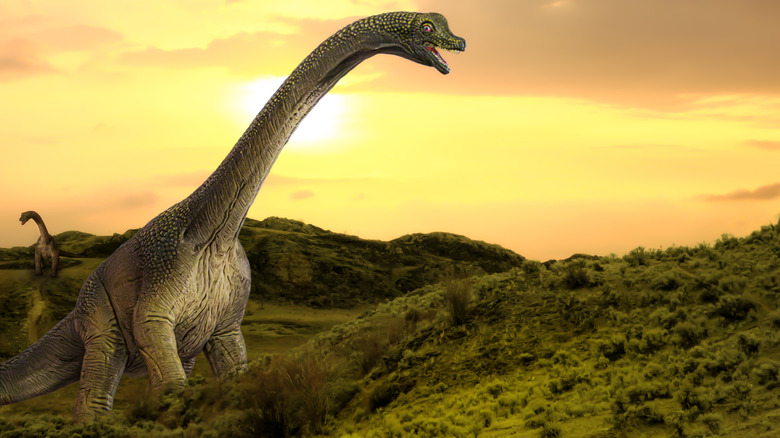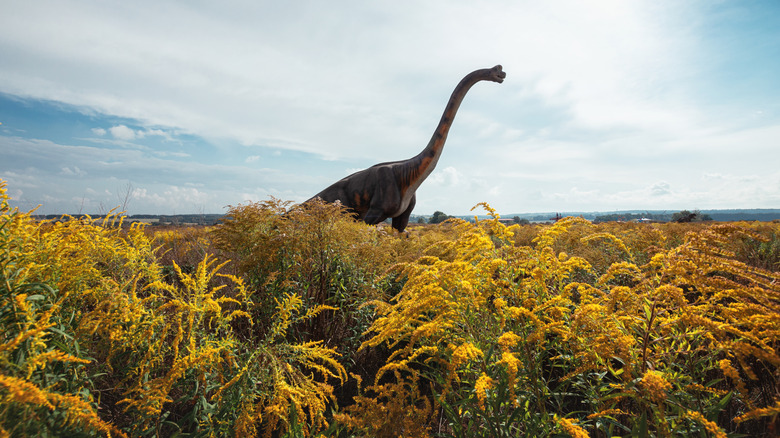The Average Lifespan Of A Dinosaur Might Surprise You
Dinosaurs are the most famous of Earth's extinct animals, and you've probably heard a lot about the mass extinction event that wiped them off the face of the planet for good (with the exception of the avian dinosaurs that evolved into today's birds, of course). But while we often discuss how the last of the dinosaurs died, we rarely dig into what their lifespans normally looked like, catastrophic asteroid strike aside. The assumption for some time was that dinosaurs were like modern animals: Large ones, such as elephants and blue whales, typically have comparatively longer lifespans. The reality, though? Dinosaurs didn't work like that at all, and many had surprisingly short lifespans, which some species possibly only living for a few decades at most.
The revelation came from a particular method that scientists used to calculate the age of a dinosaur based on its fossilized remains. If you cut a slice of a dinosaur bone, you'll see a series of concentric lines that, much like the rings of a tree trunk, mark the animal's age. These lines exist because dinosaurs grew at an uneven rate throughout the year, experiencing larger growth spurts in the warm months, when food is abundant, and slower growth in the cold months. These growth rings aren't perfectly accurate — they don't appear in all dinosaur species, and some of them disappear over time — however, they give a good estimation of the specimen's age at death.
Dinosaurs typically didn't live for long
It wasn't until the 1980s that scientists actually recognized the significance of growth rings, partially because they need to be viewed under polarized light. Before that, paleontologists had to guess at the lifespans of dinosaurs, which they did by comparing them to extant reptiles like crocodiles and scaling up by body mass. This produced some truly astounding estimates, with some proposing that long-necked sauropods, the largest group of dinosaurs, could have reached 300 years of age. However, when researchers started analyzing growth rings in dinosaur fossils, they quickly realized they had to shrink their numbers down by a lot.
Dinosaurs, as it turns out, had much faster metabolisms than crocodiles and other contemporary large reptiles like turtles, which led to shorter lifespans in relation to their body size. Arguably the most famous dinosaur fossil in the world — the T. rex skeleton known as Sue, on display at Chicago's Field Museum — was found to be just 27 to 33 years old at death. The oldest known sauropods only reached the age of about 60, a far cry from the multi-century marks scientists once predicted.
Obviously, there was a great deal of variance in lifespan between dinosaur species, and even though the biggest dinosaurs didn't live as long as scientists once predicted, they did tend to live longer than members of the smallest dinosaur species. The 110-pound Troodon formosus reached full maturity in just 3 to 5 years, suggesting a very rapid life cycle, and, sadly, a rather young demise.

